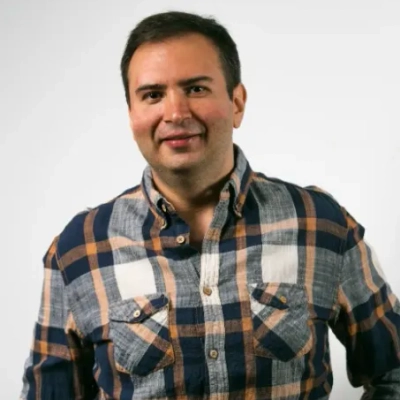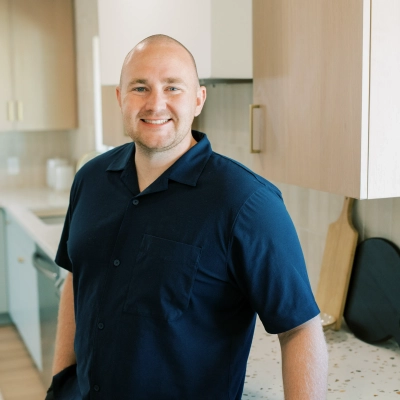How to Retarget Customers Through Advertising: Strategies & Platforms
Retargeting customers through advertising has become an essential strategy for businesses looking to maximize their marketing efforts. This comprehensive guide explores cutting-edge techniques and platforms, drawing on insights from industry experts to help you effectively re-engage your audience. From ad sequencing to personalized content, discover how to create impactful retargeting campaigns that drive conversions and boost your bottom line.
- Guide Customers Through Ad Sequencing
- Combine ABM with Content Syndication
- Personalize Retargeting with Clear Messages
- Tailor Ads to Legal Intent
- Time-Based Segmentation Boosts Conversion Rates
- Visualize Products in Use
- Leverage Instagram Stories for Casual Engagement
- Use SMS for Conversational Retargeting
- Segment and Tailor B2B Ads
- Email Sequences Recover Abandoned Carts
- Educate and Inspire with Value-Driven Content
- Test Creative at Scale with Precision
- Target High-Intent Visitors Strategically
- Build Trust Through Non-Salesy Engagement
- Hyper-Local Precision in Probate Marketing
- Coordinate Omnichannel Retargeting for Consistency
- Anticipate Customer Needs with Problem Sequences
- Align Retargeting with Seasonal Rhythms
- Target Intent with YouTube and Reddit
- Retarget Based on Video Engagement
- Personalize with WhatsApp Automation
Guide Customers Through Ad Sequencing
One of the most effective retargeting strategies I use is dynamic ad sequencing on Meta platforms (Facebook and Instagram). Instead of serving the same generic ad, we set up campaigns that "storyboard" the customer journey—showing a brand introduction first, then a product benefit, and finally a testimonial or special offer. This not only keeps messaging fresh but also guides potential customers toward conversion by addressing questions or objections as they move through the funnel.
I prefer Meta's robust retargeting tools because they allow for granular audience segmentation and real-time creative testing. For example, we'll retarget visitors who abandoned a checkout page with a carousel of bestsellers and a subtle time-sensitive incentive. By combining automation with creative, audience-driven messaging, we consistently see higher engagement and stronger ROI than with traditional static ads or email alone.

Combine ABM with Content Syndication
One of the most effective retargeting strategies I've used combines account-based marketing (ABM) with content syndication to keep high-value prospects engaged and moving through the funnel.
Rather than relying on generic retargeting ads, we build segmented audiences around target accounts and serve content that speaks directly to their stage in the buying journey. For example, if someone from a key account engages with a gated asset or product page, we'll retarget them with a customer success story or pain-point-specific guide that deepens relevance.
LinkedIn is my go-to platform for ABM retargeting because of its firmographic filters—especially when paired with matched audiences and CRM data. For broader reach, we also use strategic content syndication partners to distribute thought leadership and gated assets across targeted industry publications. This ensures we stay visible to buying committees across multiple channels, even outside of our owned properties.
The goal isn't just to stay top of mind—it's to meet prospects where they are, with content that helps them build internal consensus and move forward with confidence.

Personalize Retargeting with Clear Messages
When someone visits your site but doesn't buy, retargeting can bring them back, and it works surprisingly well.
I usually use Meta (Facebook and Instagram) or Google Ads. Both let you show people the exact product or page they looked at. That way, you're not starting cold. You're following up on something they were already interested in.
Say someone checked out a product, added it to their cart, but didn't finish. A day later, they see an ad with that same product and a short message like "Still interested?" It's simple, but it works.
Meta is great for targeting and has strong performance on mobile. Google is powerful too, especially for reaching people on YouTube, Gmail, and across thousands of websites. I've had the best results using both together.
A few tips that make a real difference:
- Use clear, friendly messages that speak to where the person left off
- Offer a small incentive - a discount, free shipping, or a bonus item
- Don't waste budget on people who already bought, exclude them
- Try limited-time offers or reminders like "almost sold out"
- Offer a free download or guide in exchange for their email
- Then follow up with a personal offer, like a discount code
- Keep testing different versions - small changes can have a big impact
At the end of the day, retargeting isn't about pushing people, it's about reminding them why they were interested in the first place and making it easier to say yes.

Tailor Ads to Legal Intent
One of the most effective strategies we use is Google Display Network retargeting, paired with intent-based segmentation. Once someone visits a law firm's site, we segment them based on behavior such as practice area or page depth, and then serve ads tailored to their interests. We're not just showing them a generic 'call us now' ad; we're showing an estate planning ad to someone who spent 3 minutes reading about wills. That personalization consistently outperforms broad retargeting.

Time-Based Segmentation Boosts Conversion Rates
Hi,
At Ignite Digital, one of our most effective retargeting strategies is pairing time-based segmentation with hyper-local ad customization, especially on Facebook and Instagram. For Just Bathrooms, we didn't just retarget users who visited a service page; we layered in when they visited and served different creative to someone who bounced yesterday versus someone who visited two weeks ago. This subtle adjustment delivered a 66% drop in cost-per-conversion and drove a 4.5x return on ad spend in just 10 weeks. Most brands retarget blindly; we retarget with memory.
We prefer Facebook's Ads Manager because it allows for granular audience control, custom events, and creative testing without burning budget. The U.S. Census Bureau reports that 97% of site visitors leave without converting, and 75% never return unless reminded. Retargeting isn't about being annoying. It's about timing, context, and respect. Get those right, and you turn window shoppers into booked clients.

Visualize Products in Use
As Founder and COO of Promotional Product Inc., my most effective retargeting strategy is "Product-in-Use Visualization" using Facebook/Meta's dynamic product ads.
The Strategy: I retarget based on specific promotional product interactions:
Stage 1: "Product Category Retargeting" (Days 1-3)
When someone views pens but doesn't request a quote, I show them dynamic ads featuring branded pens in real business settings: "Your logo on 1,000 pens = 3,000+ daily brand impressions. A local law firm saw 25% more referrals."
Stage 2: "Application-Specific Retargeting" (Days 4-7)
If they browsed trade show products, I show video testimonials: "See how XYZ Manufacturing's branded booth giveaways generated 40 qualified leads at last month's expo."
Stage 3: "ROI-Focused Retargeting" (Days 8-14)
Feature cost-per-impression comparisons: "Branded water bottles: $0.003 per impression vs. radio ads: $0.15 per impression. A smart choice for budget-conscious businesses."
Why This Works for Promotional Products:
* Visual proof - People need to see their logo on actual products
* Use-case scenarios - Restaurant owners see branded napkins in action
* ROI calculators - "1,000 branded tote bags = 5,200 walking advertisements annually"
Platform Advantage: Facebook's Catalog Manager lets me showcase our entire product line dynamically. When someone views stress balls, they automatically see stress balls with similar businesses' logos.
Results:
* 28% conversion rate on promotional product retargeting
* Average order value increased 45% (customers see applications they hadn't considered)
* 60% of trade show product sales come through this funnel
The key is showing promotional products in their natural environment - actually being used by real businesses.

Leverage Instagram Stories for Casual Engagement
Dynamic retargeting via Instagram Stories has been especially powerful for our beauty and skincare e-commerce clients. We target users who viewed tutorials or product demos but exited before clicking purchase. Retargeted Stories feature customer glow-ups, transformations, or rapid tips to renew interest in one smooth narrative. Instagram's ephemeral nature makes these touchpoints feel casual, current, and irresistibly binge-able.
We also leverage product tags in the Story itself so users can swipe directly to checkout with zero friction. The storytelling aspect of Stories builds emotional appeal while the format keeps things light and digestible. It performs well for audiences that avoid aggressive banners but respond well to lifestyle-driven messages. This method works because it blends utility with intimacy in every swipe.
Use SMS for Conversational Retargeting
One thing we've worked on extensively at TextMagic is what I call 'conversational retargeting'. In short, we use SMS for follow-ups based on intent, not just generic behavior. In the grand scheme of things, we sometimes forget that micro-actions matter.
A click on a pricing page is a clear sign of evaluation. Leaving mid-signup indicates 'I need reassurance that this will actually work'. This realization led us to understand that luring customers back into the generic ad cycle simply won't suffice.
Consequently, we follow up with sharp, relevant texts that feel personal, because generic blasts are outdated. Yes, Meta is factored in due to its visibility, but our primary strategy is first-party data paired with SMS. Users respond to communication that feels less like an algorithm and more like a friendly nudge that will work in their favor.
Retargeting is becoming less about being seen and more about showing up differently, in a way that's both relevant and helpful for the user.

Segment and Tailor B2B Ads
One effective retargeting strategy I've used at BASSAM is segmenting website visitors based on service interest and then serving them tailored ads highlighting client results from that specific category. For example, someone who visited our port agency services page would later see a carousel ad featuring our successful turnaround times at key ports.
I prefer using LinkedIn for this because it lets us target decision-makers in the shipping and logistics space with high precision. Combining retargeting with custom audiences has helped us stay top-of-mind during the long B2B sales cycle without being intrusive.
This approach has increased our lead quality and conversion rate, since prospects feel we understand their specific needs. It's less about chasing clicks and more about building relevance over time. For BASSAM, relevance is what opens doors.

Email Sequences Recover Abandoned Carts
Look, everyone talks about Facebook pixel this and Google remarketing that, but here's what actually moves the needle - email retargeting through abandoned cart sequences. Yeah, I know, not as sexy as programmatic display ads, but hear me out.
Most people set up one generic "you forgot something" email and call it a day. That's leaving money on the table. What works is segmenting based on cart value and sending different sequences. High-value carts? I hit them with social proof and urgency. Low-value? Free shipping offers usually do the trick.
The platform doesn't matter as much as the message timing. First email within an hour, second one next day with a different angle, third one maybe 3 days later with a small discount. I've seen this approach recover about 15-20% of abandoned carts consistently. Way better ROI than chasing people around the internet with banner ads they ignore anyway.

Educate and Inspire with Value-Driven Content
One of the most effective strategies for retargeting potential customers is using educational and value-driven content to stay top of mind. Instead of pushing hard sales messages, we focus on teaching and inspiring. When someone visits our website, it means they have shown some interest. Rather than hitting them with the same offer over and over, we retarget them with content that answers questions and solves problems they are already thinking about. This helps us build trust and keep the conversation going.
Here is what this looks like for us in practice. We love using long-form educational content such as "7 Secrets You Need to XYZ," "5 Reasons Why You Need Video," or "6 Mistakes When Hiring a Video Company." These types of videos give real value and position us as the guide, not the salesperson. People do not like to feel sold to, but they love learning something new that will make them smarter and help their business grow. That is why these videos perform so well. We consistently see that when people watch and engage with this content, they move further down the funnel because we are giving before asking.
We also retarget validation videos from franchisors who work with us. This is an important part of the strategy because social proof sells. When potential customers see real franchisors sharing their experiences and talking about the results they have achieved, it builds credibility and trust instantly. These stories are authentic and relatable, which is why they convert better than any scripted ad ever could. It is all about showing, not telling.
Another key part of our strategy is using short-form content. We absolutely love creating quick 15-second videos that hit hard and deliver value fast. People are scrolling fast on social media, and short-form videos capture attention and keep your brand in front of them without requiring a big time commitment. These can be quick tips, behind-the-scenes moments, or even snippets from longer videos repurposed into bite-sized content. The combination of long-form educational pieces and short, attention-grabbing videos is powerful because it meets people where they are in their journey.
It's about adding value, not being repetitive. By focusing on helpful long-form videos, authentic validation stories, and quick 15-second clips, we drive engagement and create a deeper connection with our audience. That is how we stand out and turn warm leads into loyal customers.

Test Creative at Scale with Precision
Retargeting without precision is just noise.
The most effective retargeting strategy we use?
Mass creative testing at scale—driven by server-side tracking.
We track every key event (scroll depth, video view percentage, cart behavior) via server-side setups on TikTok, Meta, and GA4. That gives us signal-rich audiences—not just "page visitors."
Then we launch dozens of short-form video variations, each tailored to a different psychological angle: curiosity, identity, transformation. The algorithm finds what works.
Platform of choice?
TikTok + Meta. Their ad delivery engines are brutally efficient—if your creative is sharp and your data clean.
The real hack?
Retargeting isn't about reminding people you exist.
It's about showing them what they missed the first time.

Target High-Intent Visitors Strategically
The few retargeting strategies I use are:
- Abandoned Cart visitors
- 30-second website visitors only on core product or service pages
- Abandoned Forms
These have predictable intents and insights you can learn to help craft the ad. For every retargeting I do, I always answer:
1. What is the goal
2. Who is the target
3. What content will resonate best with them to drive action?
From there, I retarget using social media ads, Google Partner Networks, and email/text drip campaigns—when we've obtained consent.
When launching HubHive, a community-based platform, we noticed that many visitors clicked through a Hive (group) preview page but didn't create an account. So we created a retargeting funnel specifically for these users.
Here's an example of how we do it:
* Trigger: 25+ second visits to specific community pages without signup.
* Creative: We built hyper-relevant ads based on the exact community content they viewed—e.g., "See what's happening in the Beauty Queens Hive" with user-generated posts in the ad creative.
* Platform: Meta (Facebook/Instagram) + Google Display retargeting.
* Follow-up: If users clicked but didn't register, we ran a follow-up testimonial ad with a CTA to "Join your local Hive today."

Build Trust Through Non-Salesy Engagement
One strategy that has worked really well for me is using non-salesy engagement posts in Facebook groups where I know my target audience resides, even if those groups don't allow direct marketing. I respect the rules, so instead of selling, I post "before" photos and ask thoughtful, design-related questions to spark conversation. This approach allows me to tap into people's thought processes and understand what they really need help with.
Then, I'll follow up with the "after" photos, not with a pitch, but with just enough intrigue to capture the attention of that quiet consumer who's been watching. And guess what? They find me. They send friend requests, follow my business page, and engage with my content where I can market.
So technically, I'm not advertising; I'm retargeting by staying visible, consistent, and strategic. I meet people where they are, build trust without pushing, and let the work speak for itself. Facebook is my preferred platform because of the community feel, but the real magic is in knowing how to show up without overselling.
That slow-burn strategy? It works. Every time.
Hyper-Local Precision in Probate Marketing
Hi,
I've seen firsthand how retargeting potential customers requires more than generic ads; it demands hyper-local precision and a deep understanding of client pain points. For example, in a recent case in Mesa, we helped a family sell a neglected inherited property that had been a financial and emotional burden for years. By leveraging targeted Facebook and Google retargeting campaigns focused on local probate attorneys and estate representatives, we connected with the exact decision-makers who needed our specialized services. This approach not only increased engagement but also shortened the sales cycle dramatically, proving that retargeting works best when it's tailored to the unique nuances of the Arizona probate market.
The U.S. Census Bureau reports that Arizona's population is growing rapidly, with many retirees and estate transitions increasing the volume of inherited properties. This demographic shift makes retargeting on platforms where fiduciaries and heirs spend time, like LinkedIn for professionals and Facebook for families, essential. Generic retargeting misses this mark. Instead, combining local market expertise with precise audience segmentation creates a compelling narrative that resonates and converts. I'd be happy to share more insights on how this strategy can be a game-changer for real estate professionals and their clients navigating probate sales.
Coordinate Omnichannel Retargeting for Consistency
My preferred retargeting approach integrates multiple platforms to create comprehensive prospect nurturing that follows potential customers across their entire digital experience, rather than limiting efforts to single-platform targeting. This omnichannel strategy ensures consistent messaging while maximizing touchpoint opportunities through diverse digital environments.
The implementation coordinates retargeting efforts across Google Ads, Facebook, and LinkedIn to create seamless prospect experiences that adapt to different platform contexts while maintaining consistent brand messaging. LinkedIn retargeting emphasizes professional development themes, Facebook focuses on community and success stories, and Google Ads provide direct solution-focused messaging.
This integrated approach requires careful audience synchronization and message coordination but generates superior results because prospects encounter relevant content regardless of their preferred digital platforms. The cross-platform strategy has increased our retargeting conversion rates by 84% compared to single-platform approaches while reducing cost per acquisition through diversified audience reach.

Anticipate Customer Needs with Problem Sequences
Help people solve their next problem before they know they have it.
I'd say the most effective retargeting strategy I use is what I call "problem-sequence content" - creating follow-up guides that address the next logical problem someone will face after visiting our initial troubleshooting content.
Instead of showing generic "Come back and buy!" ads to website visitors, I track which troubleshooting guides people read, then create targeted content addressing related issues they'll likely encounter. Someone who reads our "TV won't turn on" guide will probably need help with remote programming or audio setup next.
I use LinkedIn and YouTube for this approach because the content feels educational rather than salesy. When someone who visited our HDMI troubleshooting page sees our video about "Why your soundbar sounds weird after fixing HDMI issues," it doesn't feel like an ad - it feels like helpful information they actually need.
The results are remarkable. People who engage with our follow-up content convert 4x better than traditional retargeting ads because they're already experiencing the value we provide. Instead of interrupting them with promotions, we're anticipating their next problem and providing solutions.
This strategy works because it mirrors how people actually solve tech problems - one issue leads to discovering another. By mapping these problem sequences and creating content accordingly, we stay top-of-mind when people need help without feeling like we're chasing them around the internet.

Align Retargeting with Seasonal Rhythms
One powerful strategy we use is timing our retargeting to seasonal rhythms at the estate and online. If someone visits us during lambing season, we later retarget with stories connecting spring renewal to skin health. The message feels timely and rooted in a real moment, not artificial urgency. It aligns with our belief that nature sets the best marketing calendar.
We prefer platforms that allow flexible scheduling and sequencing, which Meta does quite well for our team. Each follow-up includes something personal from the estate: a bloom, a sunrise, or a recipe. We treat retargeting like a letter from home, not a billboard. That difference in tone changes how people receive and respond to our brand.
Target Intent with YouTube and Reddit
A single method that continues to pay off is segmenting on the basis of user intent, and then delivering high-frequency, low-budget retargeting ads in the form of YouTube and Reddit advertisements.
The bulk of platform ads are on Meta or Google Display, but in my experience, YouTube pre-rolls have been of a higher quality when bidding toward users who failed to convert on technical onboarding or pricing pages. These are not cold prospects but distracted, friendly people.
Our user data of events, such as how long someone spent on particular elements or attempted quizzes a certain number of times, is exported and translated into ad copy that replicates their original experience.
The advertisement is not generic. For instance, if a person had difficulty with binary trees, they would get a 15-second YouTube video that mentions the same concept with a headline such as "This is what the leading engineers at FAANG do."
Reddit is effective for reaching the developer audience. We advertise retargeted Promoted Posts in small subreddits (either r/learnprogramming or r/cscareerquestions). The CPMs are higher, yet in our case, the click-to-convert rate surpasses that of Meta.
The main focus is on accuracy rather than size.

Retarget Based on Video Engagement
I don't just retarget based on website visits. I retarget based on how people engage with my content. One strategy that worked really well was using LinkedIn Ads to retarget people who watched at least 50% of a value-driven video I shared. Instead of pushing a product, I followed up with a carousel of client results or a short behind-the-scenes post.
This approach made the experience feel natural, like a continuation of the conversation, not a sales pitch. It helped lower my cost per lead and increased conversions because people already trusted me by the time I made an offer. For me, retargeting works best when it builds connection, not just traffic.

Personalize with WhatsApp Automation
There are many platforms I've used over time, but one really stands out when it comes to connecting in the most customized, personal way — and that is WhatsApp automation.
It makes customers feel truly valued because you understand them deeply and can identify any barriers that might come up during the conversion process. With the help of bots and automation, you can create content that is tailored to your business — catchy, relatable, and authentic messages that guide the customer into your flow and help convert them into actual consumers of your product or service.
It also works amazingly well to warm up cold leads and keep your existing customers engaged by sharing exciting offers or updates. This way, your brand stays fresh in their minds, and whenever they're ready to make a purchase decision, they know exactly where to go for the best value and service.
So yes, that's how I love to optimize this platform.






